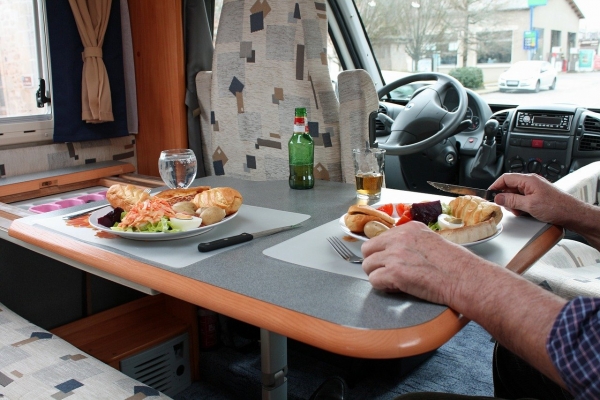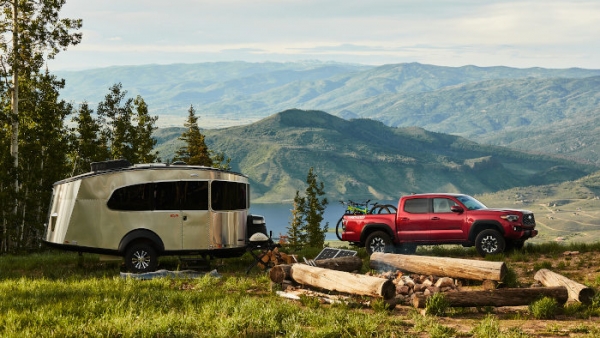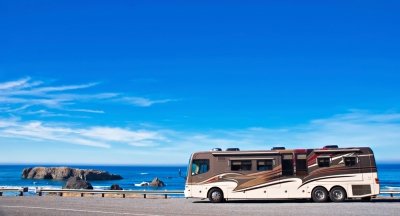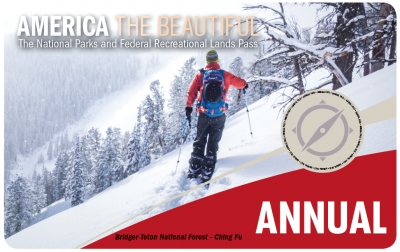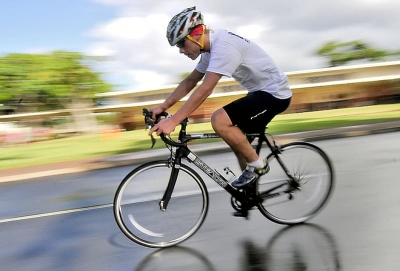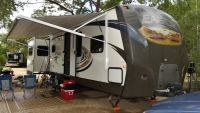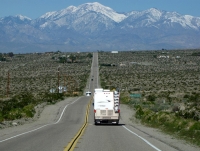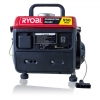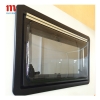Welcome to Crossing Creeks RV Resort & Spa in the heart of iconic Blairsville

RV Life (77)
Whatever 2021 brings to all of us, more Americans appear ready to do their vacationing in an RV—but not necessarily owning one.
Off-the-grid RVs are making big inroads. More manufacturers are introducing off-grid, trail-capable trailers, and the trend toward towables that can leave the traditional campsite behind is growing, according to RV Business magazine. In its list of the top 10 RVs for 2021, three of the models are off-grid-ready trailers.
RV Sales Rebound Strongly; Bigger Increase Expected in 2021
Written by MattRecreational vehicle shipments in the U.S. were on track to recover solidly from depressed 2019 sales, despite a two-month industry shutdown because of the coronavirus pandemic. And for 2021, the industry forecasts even better sales, maybe the best in its history. As usual, towables are leading the way.
After what 2020 brought us all, maybe the best gift anyone could give during the holidays is a new year.
When’s the best time to see the fall foliage in Georgia? As we’ve learned here at Crossing Creeks RV Resort and Spa in Blairsville, it all depends on where you decide to tour. Fall foliage lasts a long time in the state.
Crossing Creeks RV Resort - A Great Place To Stay for North Georgia Bicycle Events!
Written by MattCyclists will pedal their way through challenging bicycle rides and races from mid-September through the end of October in the North Georgia Mountains near Crossing Creeks RV Resort and Spa.
Motorhomes, 5th wheels, travel trailers, the list goes on... The world of RVs goes far beyond the traditional motorhome and here is the breakdown of all of the different types that you need to know.
Each year there are thousands of new motorhomes and campers of all types that hit the road. While this traveling preference never seems to grow old, it does go through cycles related to the economy and our travel preferences.
Flash floods are a very real threat to RVers. You just need to know where to turn for warnings and understand them so you can safely continue your journey to Crossing Creeks RV Resort and Spa!
Where to Hunt for Gold, Rubies, Other Gemstones in North Georgia
Written by MattThe days of striking it rich by prospecting for gold and gems in Georgia are long past, but you just might unearth a mother lode of fun. You’ll also come up with some raw, uncut gemstones and maybe even some gold!
More...
Laundry day in the RV can be especially trying: Lug all your clothes and hoarded quarters to a coin-op laundry. Wait for an available washer. Load the machine. Wait. Hope another customer doesn’t scoop up the lone unclaimed dryer before your rinse and spin cycles end. Transfer clothes to the dryer. Wait. Fold. Carry everything to your car or tow vehicle. Drive back to your RV.
Wouldn’t it be nice to wash and dry right in your RV, without using the sink?
You can install a washer and dryer in your RV if you have the room, and with a portable you can at least wash an emergency load or two inside or outside your rig even if you don’t have the space for a laundry.
Finding Space
If your trailer or motorhome offered a washer/dryer option, then your RV—even if it lacks the appliances—has a place to build them in. Some cabinet modifications are probably needed. Look online for detailed plans for your RV or call the manufacturer’s customer service line to find out if your RV model can easily accommodate a washer and dryer.
If your RV was not designed for a washer and dryer, you still might be able to install the appliances in a closet or pantry. Some units, including washer-dryer combos, may fit under countertops if you remove a base cabinet.
Hookups
You’ll have to make sure hookups can be accomplished. The location of your washer and dryer should be:
- Near electrical power.
You’ll need two 110-volt outlets for two separate appliances, or one for a washer/dryer combination, 240 volts for some models. You may have to relocate electrical outlets to make sure the plug will fit between the appliances and outlet.
- Convenient to the grey tank.
You’ll have to tap into the grey tank with the washing machine’s outlet hose.
- Tall, wide and deep enough.
The space must accommodate the height of the appliances, the recommended minimum side clearance and the recommended front and back clearance. Some units require zero side clearance.
- Big enough for a vent.
Dryers come vented and unvented, but unvented dryers dump excess moisture into your RV interior. Venting through an exterior wall is preferable.
Appliance Styles
Options abound, making it possible to add a washer/dryer to just about any RV bigger than a teardrop or popup. And thanks to small portables, you can even do laundry in or outside one of those smaller campers.
Here’s what’s available to build in:
Washer/dryer combo. About the size of a washer alone, these front-loading units turn into a dryer after the wash, rinse and spin cycles. That saves space. Some, such as the Splendide 2100XC, automatically start drying when the washing is done. The capacity of the washer is 15 pounds, and the dryer, 11 pounds. Cost: $1,100 to $1,350.
Stackable. An RV-size front-load washer and dryer stacked, such as the Equator EW 824 and ED 850, require only the footprint of the washer, about 23 inches wide and 22 inches deep, but need about 5 feet in height. The washer is on the bottom and the dryer on top. The washer and dryer each hold 13 pounds. Cost: $1,250-$1,500.
Stacked integrated unit. Often found in apartments, these compact units have a washer on the bottom and a dryer on top. They are made as one tall unit, each about 28 inches wide. The GE Spacemaker Laundry Center needs about 6½ feet of height. It can handle 3.8 cubic feet for washing and 5.9 for drying. Some models may require a 240-volt line and breaker. Cost: $1,250-$1,500.
Portables for Tight Spaces
Tiny alternatives—portable units that wash a small load and spin the items quite dry in a separate drum—help out in small campers. An example is the Best Choice Model SKY5406 twin-tub washer. It can wash a small load, about 8 pounds, with a separate spinning drum that can dry up to 5 pounds. With a power demand of 140 watts or less, it’s possible to run on solar power. Cost: $95-150.
Portables have hoses or hookups for hoses, or you can just fill from a bucket or large bottle. These units aren’t always automatic. You may have to add water for the rinse, and the dryer drum uses the low-tech method of sensing if clothes are dry: Stop and feel them. Drain into your shower or use natural, biodegradable soap and drain outside where permitted.
Clothes Lines
If you go without a dryer, or if you use a portable, you’ll need to hang your laundry to dry.
Look for something that has convenient setup and teardown. The Smart Drier clamps onto the ladder of your camper and opens to reveal several lines for hanging clothes and linens. With the sun reflecting off your RV, clothes dry quickly, especially if hung after being spun thoroughly. Cost: $100 or less.
The Australian-made Versaline Traveller Compact RV Clothesline hangs on two wall brackets that you screwed into a side or back exterior wall of an RV or to vehicle. It removes easily and folds into a carrying case when you’re done. Cost: $150 or less.
Image Credits: campingworld.com
If you live largely on solar when you’re off grid, and even if you rely on generators, portable lithium “generators” are a great addition to your RV energy arsenal.
But let’s get something straight: No matter what they’re called, these lithium-ion units are not generators. They are high-capacity portable storage batteries with built-in inverters and convenient ports for tapping the energy they store. To charge this battery, you still need a gasoline- or propane-powered generator, a campground power supply, a solar array, or in some cases, your car’s alternator and a 12v DC port, possibly with a separate inverter.
Still, once charged, they can store and deliver hours of power for electronic devices, lighting, fans and mall appliances.
Similar to, Different from House Batteries
Similar to lithium house batteries, the portable power supplies:
- Store energy sent by generating devices.
- Can power devices for hours, depending on the draw and the power station’s storage capacity.
- Allow repeated deep discharges without degrading battery health.
- Do not off-gas, making them safe for interior use.
- Are quiet.
There are big differences, too. The lithium portable power stations:
- Don’t get hard-wired to an RV electrical or charging system.
- Have handles for carrying.
- Have built-in inverters for safe, pure sine wave power.
- Include AC and DC connectivity so devices that draw from them do not have to be plugged into an RV’s hard-wired outlets.
Connectivity
Power ports in each unit typically include:
- 110v grounded AC power outlets for such items as fans, lamps, computers, printers, coffee pots, hairdryers, C-PAP machines and televisions.
- USB ports for charging phones and tablets.
- A cigarette lighter-type power outlet for 12v DC devices, such as rechargeable flashlights and tire inflators.
So you can keep tabs on how much power you’re using and have in reserve, some power stations have digital readouts and/or meters. If not, you can attach a meter such as a Kill A Watt, $20-25.
Inputs typically include a grounded (three-prong) AC receptacle, which you can plug into an RV outlet for recharging from your generator, and a solar input from your panels, whether mounted on your RV or portable.
Advantages over Generators
Sometimes you just can’t run even a quiet generator—at night, for instance, when neighbors are close, or park if rules forbid it. And you can’t run a generator if you’re out of fuel for it.
A lithium portable battery is likely to have a cooling fan, but it is about as quiet as a laptop’s. Outdoors, it won’t disturb wildlife.
Limitations
On cheaper lithium power stations, a hairdryer or blender may work on a low or medium setting, but not on high. A microwave or air conditioner is almost surely too much to handle except on high-end batteries with a 1,000w AC output. And although a smaller portable battery can power, say, a computer or a blender, it may not handle both at once.
Breakers shut the units off if they’re overtaxed, keeping them from overheating.
Price of Power
The more capabilities and capacity you want, the higher the price, but the price range is wide.
Here are examples:
Rockpals 240Wh Portable Generator Rechargeable Lithium Battery Pack Solar Generator, $185-200. This Rockpals portable lithium battery can power computers, tablets, cell phones, CPAP machines, small fans, drones and lamps but is not suitable for small appliances, such as hairdryers, coffee machines or toasters. At 5.5 pounds, it’s light enough to take on the trail. Outputs: USB-A (2), 110v AC (2), 12v DC car-type port. Inputs: Wall outlet, car port or solar panel.
Suaoki G500 Portable Power Station Portable Lithium 500Wh Rechargeable Solar Generator, $500-526. The Suaoki G500 is a versatile all-around unit that can power some small appliances as well as recharge electronic devices. A digital display monitors charging input, draw and reserve. At 22 pounds, it’s not light enough for trail use but it’s quite manageable around the campsite. Outputs: USB–A (2); USB-C (1); 12v car-type port (1); 110v AC 300w (2). Inputs: wall outlet, car port or solar panel.
Maxoak Portable Power Station Bluetti EB150 1500Wh, about $1,400. The Bluetti EB150 is powerful and versatile. With 1,000w maximum sine-wave 110v output through its inverter, the Bluetti can power even wattage-hungry hairdryers and blenders, and tools, such as drill-drivers. With 1,500wh on tap, it can power a laptop for a full day, a fan overnight, and probably even a small air conditioner (not a rooftop unit) for six or more hours. At 38 pounds, it’s portable around the campsite or inside your RV. Digital readouts monitor input, output and reserve. Outputs: USB-A (4); USB-C (1); car-type 12v DC (1); 110v AC (2). Input: Solar panels; wall outlet; car 12v port, but only with an inverter.
- 2*AC Outlets(Standard AC110V US Plug) for Most Household Appliance under 1000W Such as TV, mini Refrigerator, Household Dryer, CPAP,Drone.1*DC12V for Car Powered Devices like Car Fridge, Car Vacuum Cleaner,1*PD Type-C (Max 45W) for USB-C Devices Such as Laptop MacBook/MacBook Pro & PD USB-C Phones,4*5V3A(Max) USB for phones, Tablets, Camera, Fans, light, etc, Keep Multi Devices Powered in Case Power Failure or Away from a Wall Outlet, Widely Used for Indoor or Outdoor.
- Solar/AC Recharge: 1)This Power Generator Can be Recharged from the Sun with Solar Panel (Open Circuit Voltage must be 16V~60V(Max),Max 500W,Solar Panel not Included). 2) This Power Station Can be Fully Charged in 10 Hrs by being Plugged into the Wall Outlet.Charge Time varies on the Solar Panel(Higher Power of the Panel, Shorter Charge Time you will Get), eg. 300W Solar Panel: About 5-5.5Hrs. 3*150W Panel in Series: About 3.5-4Hrs. Tips:Car Charge: you need buy a Power Inverter(≥300W) yourself.
- Other Highlights: 1) MPPT High Efficient Solar Charing; 2) MC4 Solar Charging Cable is Included, No need other Charge Controller; 3) Battery Management System (BMS),Protect from Overvoltage,Overcurrent,Short-circuit, Temperature Control & more Safeguards. 4) LCD Screen to Monitor the Remaining Capacity/Charging/Discharge/Abnormal Status, Error Code will be Showed for any Malfunction; 5)Auto Shut off after Fully Charged; 6) 50/60Hz Frequency Adjustable 7)Size&Net Weight: 14.6*6.5*14.4inch,37.9lb.
Enough winter, already.
Let’s start planning for spring and some things you can do in March with an easy drive from Crossing Creeks RV Resort and Spa in Blairsville, Georgia, where you can stay in comfort.
Here’s a look at some nearby fun North Georgia Mountains events early in the season:
Dahlonega Festivals
A series of 2020 festivals in Dahlonega, a picturesque town that’s not even an hour’s drive down U.S. 19 from Crossing Creeks, begins with the Dahlonega Literary Festival on March 6 and 7, and the Dahlonega Science Festival, March 6-8. More festivals are scheduled through the year, including the Bear on the Square Festival, April 17-19, and the Dahlonega Arts and Wine Festival, May 15 and 16.
Dahlonega boomed in the early 1800s as the site of the first U.S. gold rush, two decades before San Francisco opened its Golden Gate. You can still pan for gold. For a while in the 19th century Dahlonega had a U.S. mint that produced gold coins. Today the town of about 5,500 people, surrounded by the North Georgia Mountains ad man of Georgia’s finest vineyards, is better known for its festivals featuring the arts, live music, and wine tastings.
The literary gathering inside the Dahlonega Baptist Church, 234 Hawkins St., features nationally known and regional authors, readings and book signings. The list of this year’s authors is online. Admission to the event is free. Money raised through donations and sponsorships benefits literacy projects in Lumpkin County. An eclectic mix of live music will play throughout the two days.
Event: Dahlonega Literary Festival
Location: Dahlonega Baptist Church, 234 Hawkins St., Dahlonega, GA
Time/date: Saturday, March 16, 2020, 10 a.m.-6 p.m.; Sunday, March 17, 10 a.m.-5 p.m.
Admission: Free, all ages
Directions: an hour’s drive from Crossing Creeks
The third annual Dahlonega Science Festival, “Vision 20/20,” will be held on the Dahlonega campus of North Georgia University and in downtown businesses March 6-8. Events at the festival, a project of the Dahlonega Science Council, will examine all sorts of scientific topics with an eye toward the future. Planned are talks by scientists, engineers and futurists, planetarium shows, a children’s stage show and hands-on activities, including crime scene investigation.
Events are free to all ages. You can watch for a list of speakers and schedule online. Past speakers have included NASA engineers and scientists, and professors from several universities.
Event: Dahlonega Science Festival
Location: University of North Georgia Dahlonega Campus; Dahlonega downtown businesses
Dates, times: March 6-8, 2020; event times to be announced
Admission: Free to all ages
Directions: an hour’s drive from Crossing Creeks
Hippie Fest 2020
Here’s a happening that’s far out, but not far away. Hippie Fest is a 1960s déjà vu at Uncle Shucks Corn Maze and Pumpkin Patch in Dawsonville, Georgia, just a 1¼ hour’s drive from Blairsville. It will happen rain (just like the 1960s Woodstock festival) or shine on Saturday, March 14, and Sunday, March 15.
Stroll through the scores of vendor tents in search of that perfect tie-dye shirt. If you can’t find it, just mellow out, because you can tie-dye a tee at the show. If it’s been years since you’ve seen a rear-engine VW bus or an early air-cooled Beetle, you’ll see quite a few at Hippie Fest’s car show, which runs both days. There are prizes for car show participants, including Most Shagadelic and Most Psychedelic vehicles, and Grooviest Bug.
Family-friendly music and entertainment will be presented live each day. You’re welcome to bring your own lawn chair. You can even bring your dog and let him groove (but clean up after him, please). Food and drink are for sale.
Hippie Fest may not attract the multitudes that flocked to Yasgur’s Farm, but maybe that’s because tickets are limited. You must reserve tickets online.
Event: Hippie Fest 2020
Location: Uncle Shucks Corn Maze and Pumpkin Patch, 125 Bannister Road, Dawsonville, GA 30534
Time/Dates: Noon-7 p.m., Saturday, March 14-Sunday, March 15, 2020
Admission: Single day, $11.30 (including fees); two days, $16.45; children 10 and under, free.
Tickets: Limited availability. Reservations required online.
Camping spaces: Boondock only. Sold out.
Directions: 1¼ hour’s drive from Crossing Creeks
Suwanee American Craft Beer Fest
This will be the 10th year for the Suwanee American Craft Beer Fest in Town Center Park in Suwanee, about a 1¾ hour’s drive from Crossing Creeks. The festival, on Saturday, March 14, 2020, bills itself as Georgia’s largest craft beer festival. Only three days before St. Patrick’s Day, the festival doubles as a day for wearin’ the green.
Admission entitles ticket holders, who must be 21 or older and have a photo ID, to sample any of more than 300 craft beers, including some new releases. Food is for sale, as are nonalcoholic beverages. Reduced-price designated driver tickets, available with general admission tickets, do not include tasting. VIP tickets include noon admission, a goody bag, souvenir tee shirt, guided tours and use of private rest rooms. Designated driver tickets are not available with VIP tickets.
Event: Suwanee American Craft Beer Fest 2020
Location: Suwanee Town Center Park
Time/Dates: Saturday, March 14, noon-5 p.m. (VIP); 1-5 p.m. (general admission).
Admission: General admission, $50 online (rising to $55 on Feb. 23); $60 at gate. Designated driver ticket (must be purchased by buyer of general admission ticket), $15. VIP, $110.
Pets: Certified service dogs only.
Smoking: In open areas only, not near tents.
Directions: 1¾ hour’s drive from Crossing Creeks
Windows are a major source of cold air in a heated travel trailer or motorhome, but there are ways to reduce drafts and incoming moisture. At Crossing Creeks RV Resort, Eeven the Georgia mountains can get pretty chilly in late fall and winter for a Southern state.
One problem with RV windows is that build quality isn’t the greatest on many RVs, and the stress from frequent travel just make that worse. Try this: Buy canned smoke or light a match and blow it out, then hold it near a closed RV window, making sure not to get too near curtains. If the smoke seemingly disappears into the wall, it’s really making its way into cracks that let in winter’s cold and allow heat to escape.
Some RV window solutions are more expensive, but most are downright cheap. All will take some degree of work to make or install, but several aren’t particularly hard.
Double-Pane Windows
Most RV windows have a single pane—not the best at keeping out the cold. If you like a lot of light, bigger windows are a great idea—until winter hits. A single-pane window typically has an R value of 1, where R signifies resistance to thermal transfer, with higher numbers indicating more resistance. R-1 is perhaps 1/20 of the insulating value of a ceiling and a tenth or less of wall insulation. The bigger the window, the bigger the gap in your wall insulation.
Add to that the air leaks inherent in many RV window frames and you have a chilly RV.
Many RVers who have double-pane windows say they make a difference, but others warn that they damage easily. If shaking from travel breaks a seal, the windows can fog. Although they are typically rated only R-2, they have a space between them that is a vacuum or filled with an inert gas to reduce thermal transfer.
Double panes can be purchased and installed as replacements for your original single panes, but they are an easier solution when you buy an RV new because there’s no extra work to do. No, you’re not likely to buy a new RV just to get better windows, but they’re worth considering if you trade up.
If you install new windows, use adequate urethane caulking, which flexes, around the frame and under the trim to eliminate air leaks.
The big bonus of double-pane windows is that your RV interior will feel warmer but remain bright.
Reflective Barriers
Many RVers use bubble-type reflective sheeting, perhaps the best-known of which is Reflectix, over windows inside their RVs. Like a single pane of glass, bubble-type reflective covers probably have only an R-1 insulation value. But if installed properly, their effective performance, like that of double-pane windows, is higher.
The key is the material’s reflective value, not its insulating value. It will reflect heat away from its shiny side, so installing the shiny side toward the interior of your RV will reflect some of the heat back into the living space. Proper installation calls for an air pocket on each side of the cover. The air pocket is critical. The higher R-values claimed by manufacturers are based on the wrap not touching the window glass.
Methods of attaching Reflectix range from duct tape to Velcro and attaching a heavy cardboard frame, then hanging the assembly, sometimes with hooks and wires. You can find plenty of how-to videos online. The tighter the seal, the better reflective wrap works as a moisture barrier.
Some RVers use the reflective bubble wrap with extruded polystyrene foam sheathing to add insulation value. Mounting the foam against the reflective wrap does not lower its reflective property.
The most obvious negative in using reflective bubble sheeting or foam is that the interior of your RV will be dark.
Shrink-Wrap Plastic
Often used by owners of sticks-and-bricks homes, shrink window plastic also has little insulating value. Properly installed, however, it seals at least partly against air leaks and the resultant drafts, and it forms an air gap between the plastic film and the window pane to reduce temperature transfer. It’s a good seal against moisture.
Cut the plastic cover to the approximate size of the window frame and mount it as tightly as possible using double-sided tape. Then heat the plastic with a hair dryer to shrink it and draw it taught to the point that it is wrinkle-free. It’s intended to remain in place for the season—not good if you like to open your windows occasionally. You can always use a roof vent for some fresh air.
The plastic is clear, so it keeps your RV interior bright, although the view through the windows may be slightly cloudy.
Insulated Curtains
Providing some protection against temperature transfer are insulated curtains.
An online search yields an assortment of sticks-and-bricks window products, but a handy RVer could modify insulated curtains for camper use. Don’t think that blackout curtains are insulated; they’re not unless they are so labeled.
You can get some good tips on making insulated RV window covers here.
Alternative Solutions
If you don’t want to insulate your windows, insulate yourself. Dress in layers inside your RV when temperatures are colder. Woolens breathe better than acrylics, which can make some people sweat—not good when it’s cold.
At night, if you’re at a powered campsite, try an electric blanket. It’s pretty cozy under there. If you don’t want to go electric or can’t, at least get a heavily insulated, conventional blanket.
Photo Credits: alibaba.com
